10 Best Public Art Works That Transformed Public Space
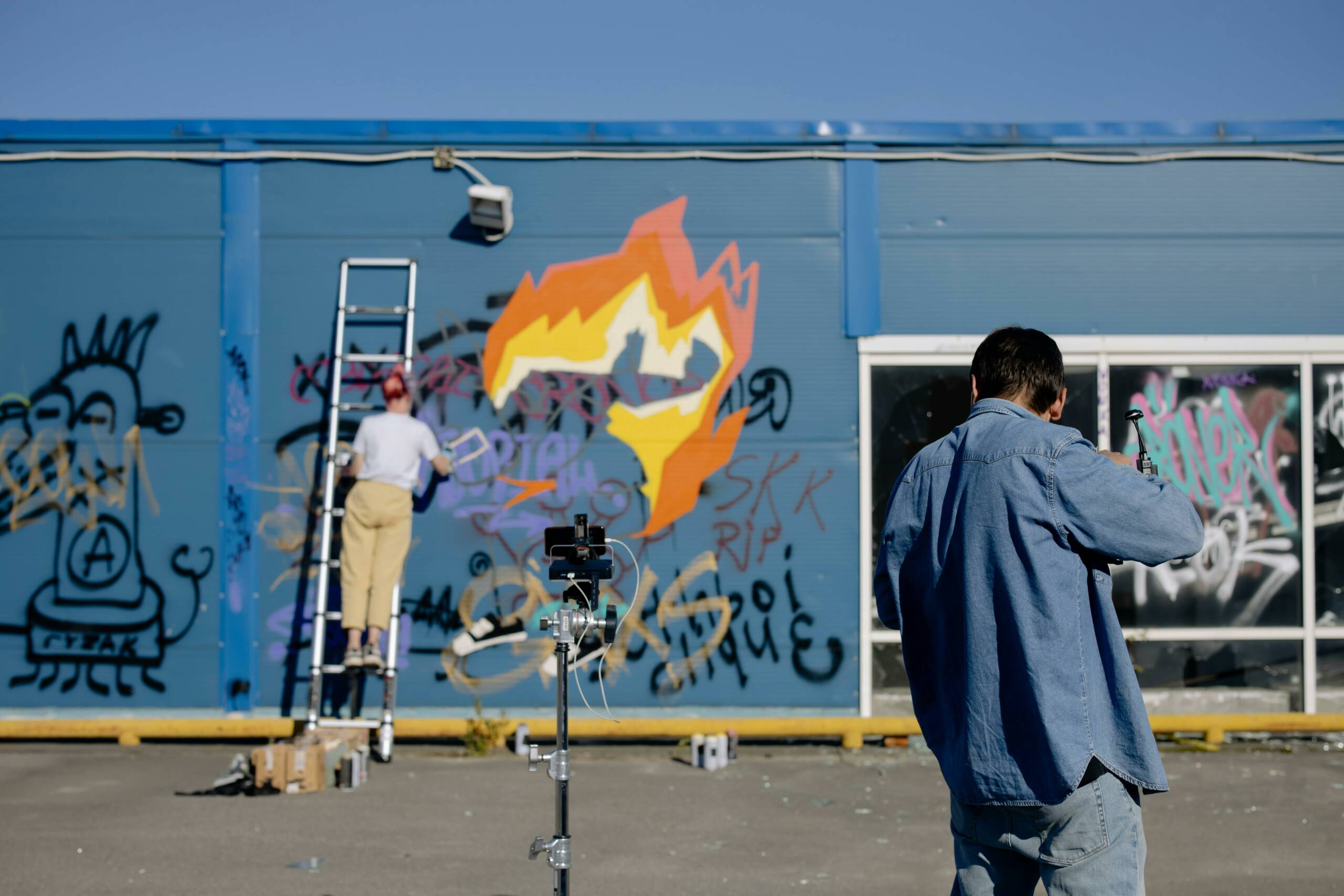
Art in public spaces is a form of visual expression installed in open, accessible environments, often intersecting with urban design, cultural identity, and civic engagement. Whether defined as urban art, monumental sculpture, or large-scale public installation, these works operate beyond aesthetics; they shape how people interact with the built environment.
This article presents a curated selection of ten public artworks that have made a lasting imprint on their surroundings, altering cityscapes socially, architecturally, or symbolically. Each entry explores not only the piece itself but also the context of its commissioning and the response it generated within its community.
Designed for city planners, architects, developers, cultural commissioners, and those exploring the role of art in civic life, the list offers insight into how thoughtfully placed public art can transform more than just physical space.
1. Cloud Gate by Anish Kapoor (Chicago, USA)
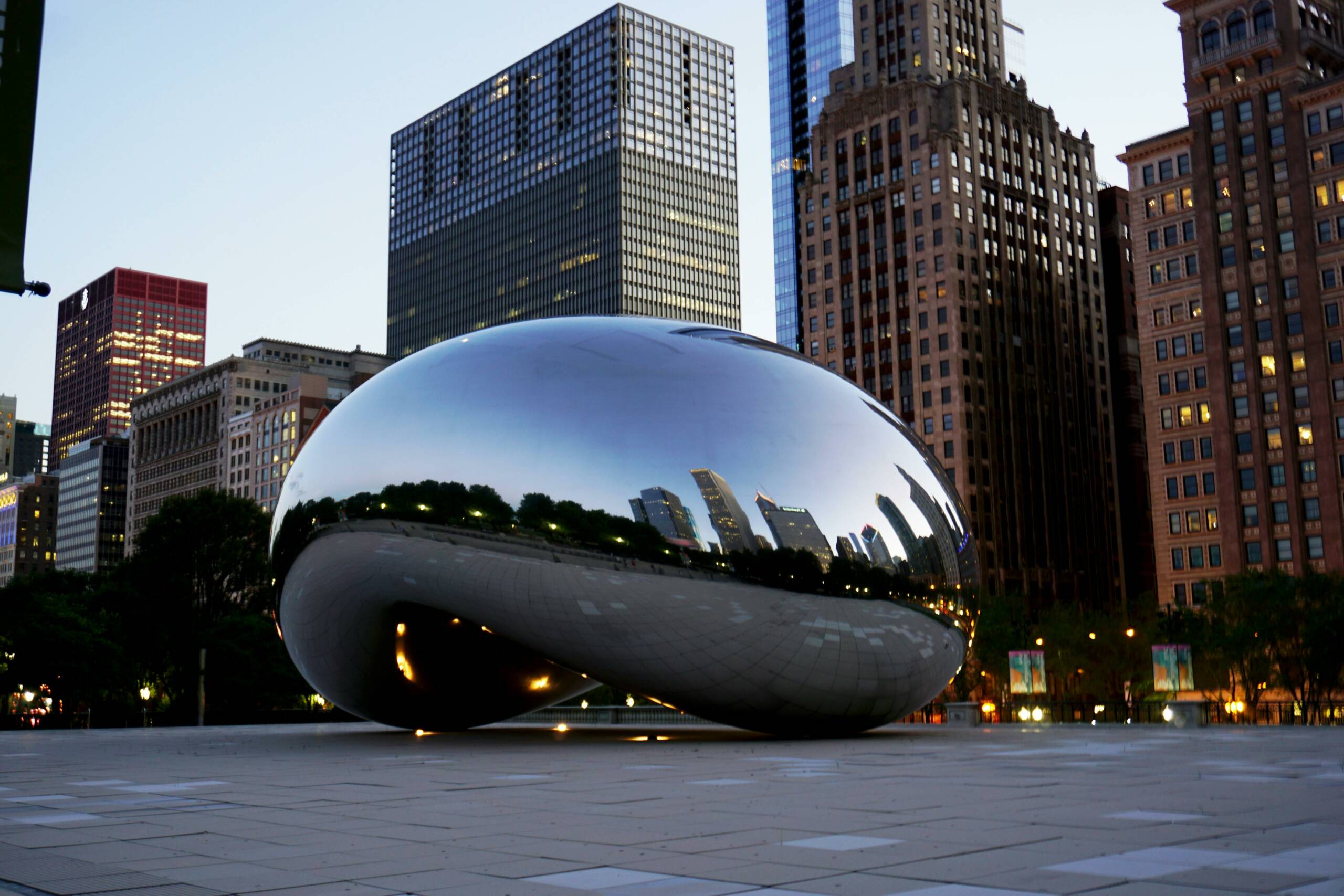
Cloud Gate is a public artwork created by Anish Kapoor, installed in Chicago’s Millennium Park in 2004. Made of 168 stainless steel plates welded together and polished to a mirror finish, the work measures 33 feet high, 42 feet wide, and 66 feet long.
Often referred to as “The Bean,” its highly reflective surface draws in the surrounding skyline, city dwellers, and sky, collapsing distinctions between viewer, object, and environment. The sculpture was commissioned by the City of Chicago and funded through a mix of public and private contributions.
As a permanent installation, Cloud Gate was engineered with advanced thermal expansion systems to withstand Chicago’s climate and designed to invite interaction, from selfies to city-organized events around it. Kapoor’s work sits within the tradition of site-specific public sculpture, echoing the late 20th-century shift toward interactive, socially visible forms of monumental art.
This public art piece reshaped how Millennium Park functions as an urban space. It became a gathering point, a visual icon, and a symbol of civic identity, turning an engineered object into a social instrument. By embedding reflection and distortion into everyday movement, Cloud Gate changed how public art is experienced within city life.
2. The Gates by Christo and Jeanne-Claude (New York, USA)
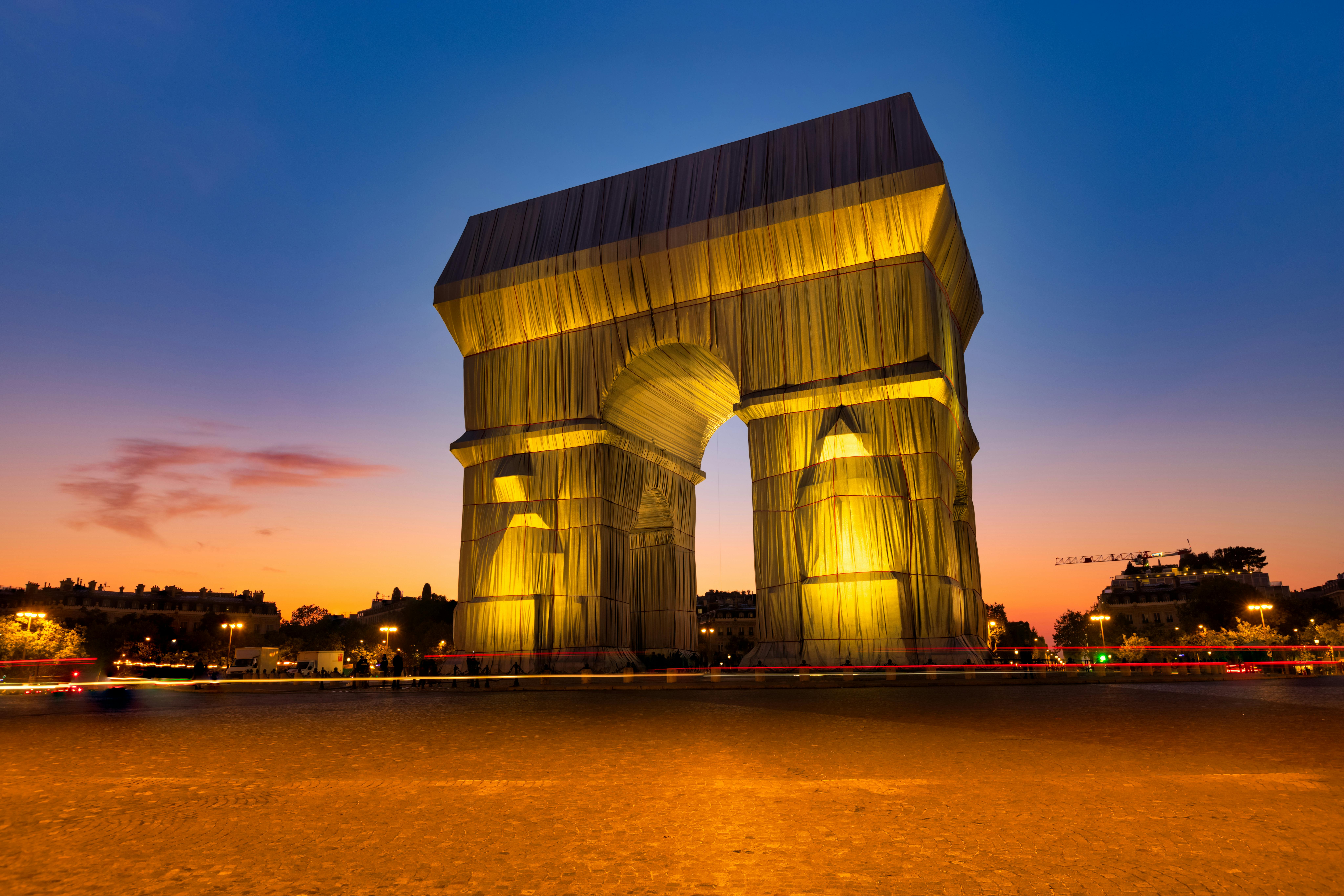
The Gates is a public artwork created by Christo and Jeanne-Claude in Central Park, New York, USA, installed in 2005. This large-scale installation consisted of 7,503 gates, each with free-flowing orange fabric hanging from the top.
The project spanned 23 miles of pathways, transforming the park into a vivid sea of color. Made from fabric and steel, the gates stood 16 feet tall, inviting pedestrians to walk through and engage with the space.
Commissioned by a hybrid collaboration between private donors and public institutions, The Gates was funded by Christo and Jeanne-Claude’s personal resources and donations. The work was temporary, remaining in place for 16 days.
This installation connects to the broader site-specific movement, engaging with the public through participatory interaction. Its temporary nature blurred the boundaries between art and public space, encouraging new dialogues about accessibility and urban engagement.
The Gates by Christo and Jeanne-Claude also redefined how urban environments could host large-scale art without disrupting the functionality of the space. In addition, The Gates influenced future public art projects, emphasizing community interaction and the impermanence of urban art. The project left a lasting legacy in Central Park and within public art discourse.
3. East Side Gallery (Berlin, Germany)
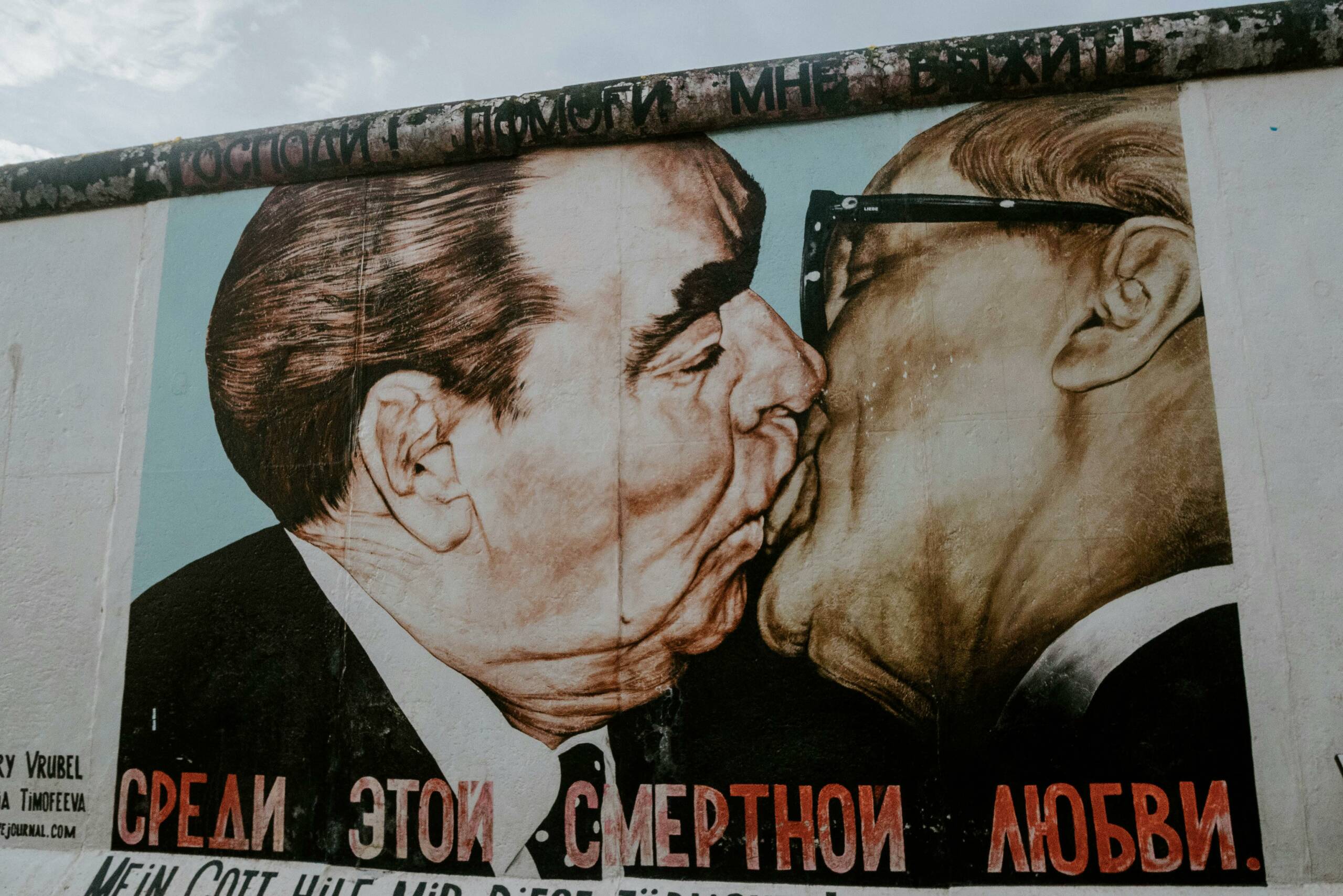
The East Side Gallery is a monumental public artwork, consisting of a series of murals painted on the longest remaining segment of the Berlin Wall. Created by over 100 artists, this mural installation spans a stretch of 1.3 kilometers along the Spree River in Berlin, Germany. It was installed in 1990, just after the fall of the Wall, as a symbol of freedom and reconciliation.
Made primarily with acrylic paint on concrete, the murals reflect themes of unity, hope, and the end of division. The gallery includes iconic pieces such as “The Kiss” by Dmitri Vrubel. This permanent installation has become one of the most visited outdoor galleries in the world.
Originally commissioned by the Berlin Senate and various private donors, the East Side Gallery connects deeply with the city’s history and political shifts. It has played an essential role in reshaping the surrounding urban space, transforming what was once a symbol of division into a vibrant cultural site.
The East Side Gallery has inspired discussions on freedom, unity, and the power of public art to heal. Its enduring legacy continues to influence both art movements and urban revitalization projects globally.
4. Maman by Louise Bourgeois (Multiple Locations)
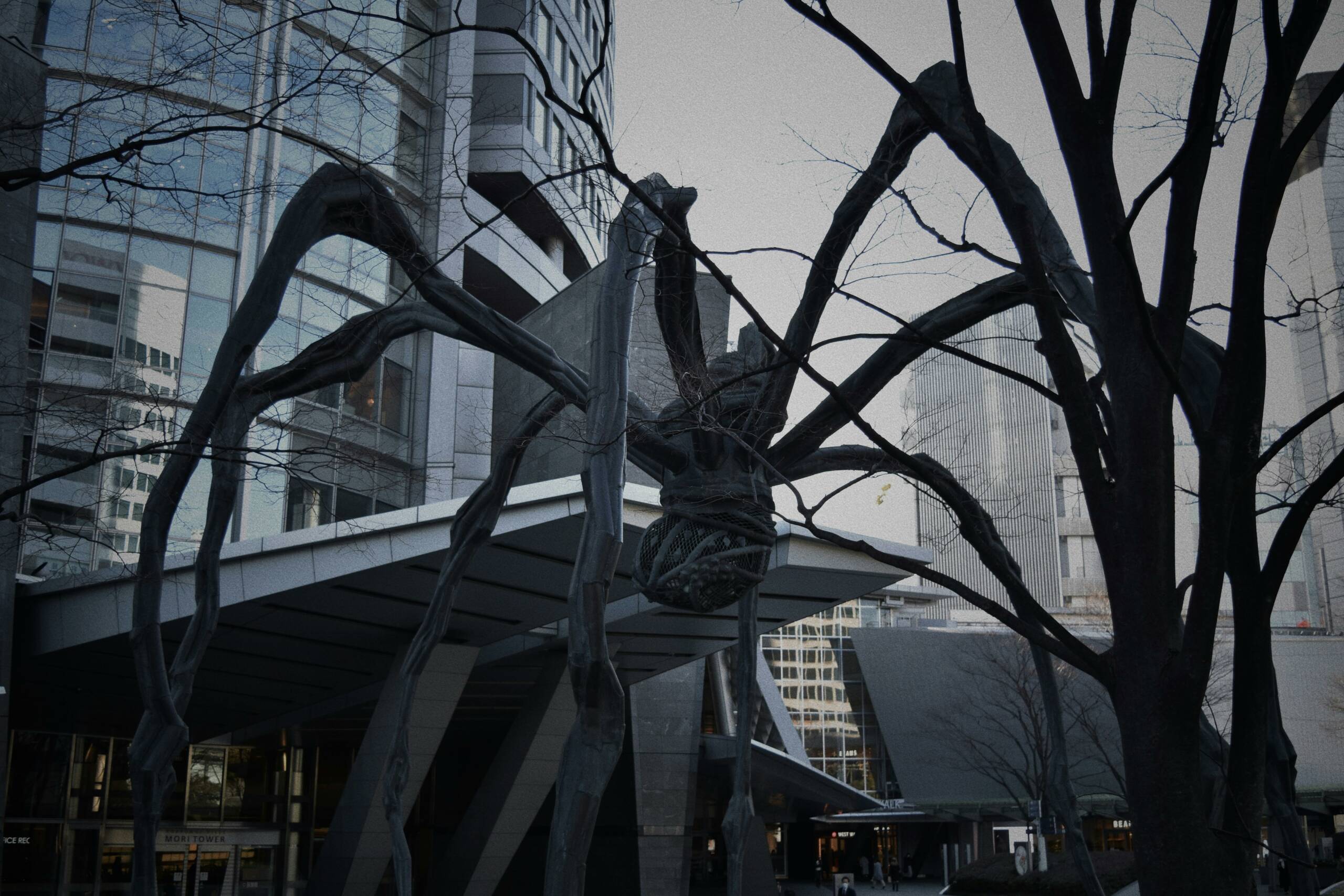
Maman is a monumental sculpture created by French-American artist Louise Bourgeois. First unveiled in 1999, this public artwork has been installed in various locations worldwide, including the Tate Modern in London, the Guggenheim Museum in Bilbao, and the National Gallery of Canada in Ottawa.
Constructed from bronze, stainless steel, and marble, Maman stands at over 30 feet tall, with a spider-like form that features intricately detailed legs and a marble egg sac.
The work, commissioned by various cultural institutions, aims to provoke a deep emotional and psychological response. It is not only a striking visual piece but also an exploration of maternal strength and vulnerability.
Public artwork like Maman invites interaction by encouraging viewers to contemplate themes of protection, fear, and intimacy in relation to the urban environment. The sheer scale of the sculpture alters the perception of the space it occupies, transforming public areas into spaces for reflection.
As part of the broader movement of monumental sculpture, Bourgeois’s work connects deeply with the cultural landscape, pushing boundaries in the relationship between art, architecture, and public space.
The presence of Maman challenges the traditional boundaries of public art, becoming both a site for contemplation and a marker of shifting urban identities.
5. Angel of the North by Antony Gormley (Gateshead, UK)
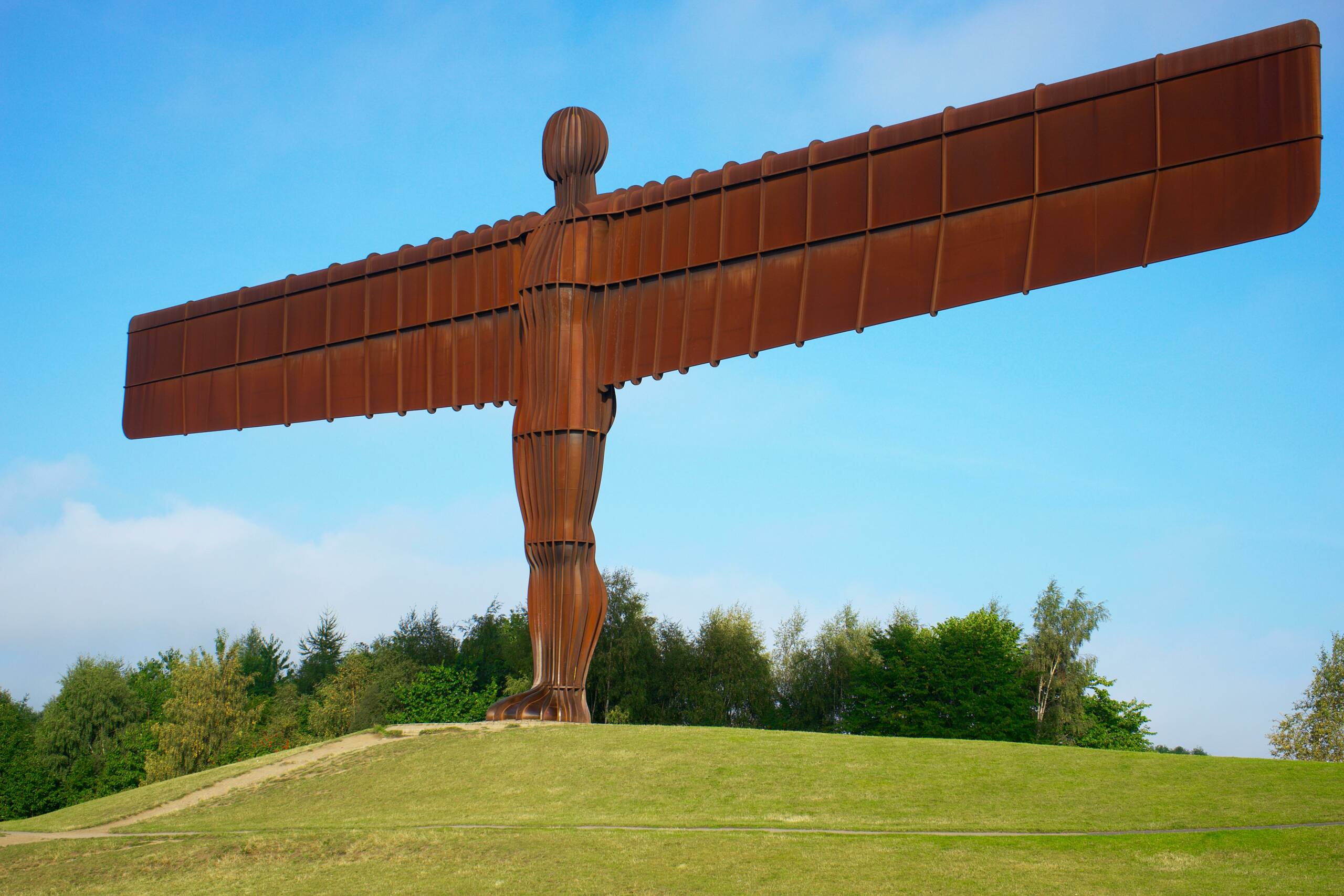
Angel of the North is a public artwork in the form of a monumental steel sculpture by British artist Antony Gormley, installed in Gateshead, UK, in 1998. Standing 20 meters tall with a wingspan of 54 meters, it is one of the largest public sculptures in Europe.
Fabricated from weathering steel, the work is permanent, engineered to withstand strong winds and shifting ground conditions due to its location on a former coal mine.
Commissioned by Gateshead Council with funding support from Arts Council England and the National Lottery, the sculpture reflects a shift in public art commissioning toward civic regeneration. Its open-armed form, modeled on a cast of the artist’s body, was designed to echo both industrial heritage and a sense of human presence in space.
This site-specific public art work aligns with late-20th-century movements that redefined how sculpture engages urban settings, not as isolated monuments but as spatial interventions.
In Gateshead, Angel of the North altered the perception of the region, contributing to cultural identity and long-term transformation of post-industrial public space. It became a symbol of renewal, linking art, memory, and geography in a way that redefined the local and national visual narrative.
6. Spiral Jetty by Robert Smithson (Utah, USA)
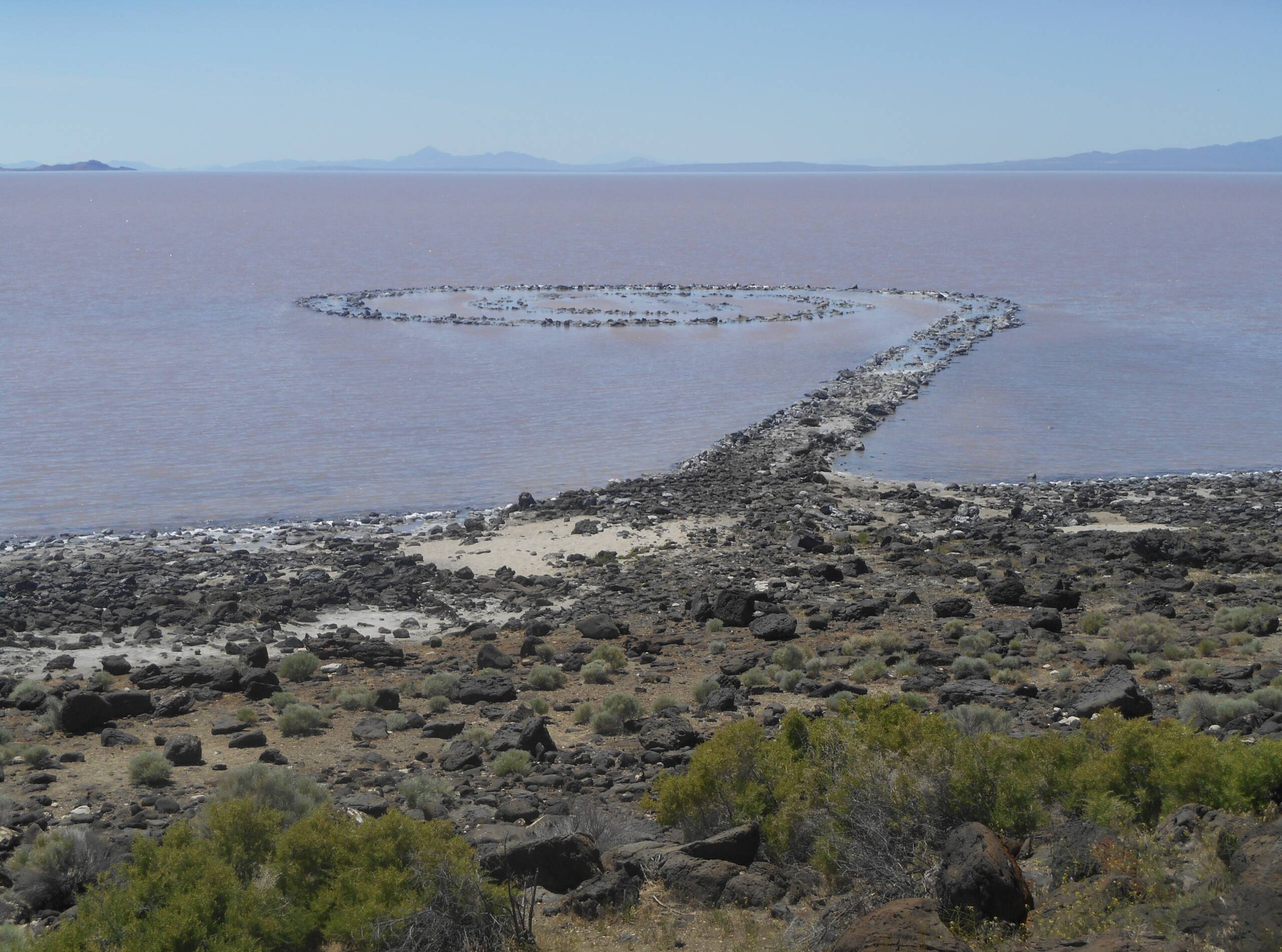
Spiral Jetty is an iconic earthwork by artist Robert Smithson, created in 1970. Located on the shores of the Great Salt Lake in Utah, USA, this large-scale sculpture is made from mud, salt crystals, basalt rocks, and water. Spanning over 1,500 feet, the work forms a spiral that stretches into the lake, engaging directly with its natural surroundings.
Commissioned by the nonprofit art organization, the Dia Art Foundation, Spiral Jetty was funded through private donations and grants. It was designed as a permanent installation, though its appearance changes over time due to fluctuating water levels.
Smithson’s design concept reflects his interest in entropy and the passage of time, emphasizing the natural processes of decay and transformation.
Spiral Jetty is a key example of Land Art, a movement that connects artworks to the natural environment, rather than to urban spaces. The work challenges traditional ideas of public art by using a remote, uninhabited location.
It has since become a major cultural landmark, influencing how art is perceived in relation to nature and human interaction with the environment. The piece has also become a symbol of artistic legacy, demonstrating how public art can transform spaces into sites of contemplation and dialogue.
7. LOVE by Robert Indiana (Various Cities)
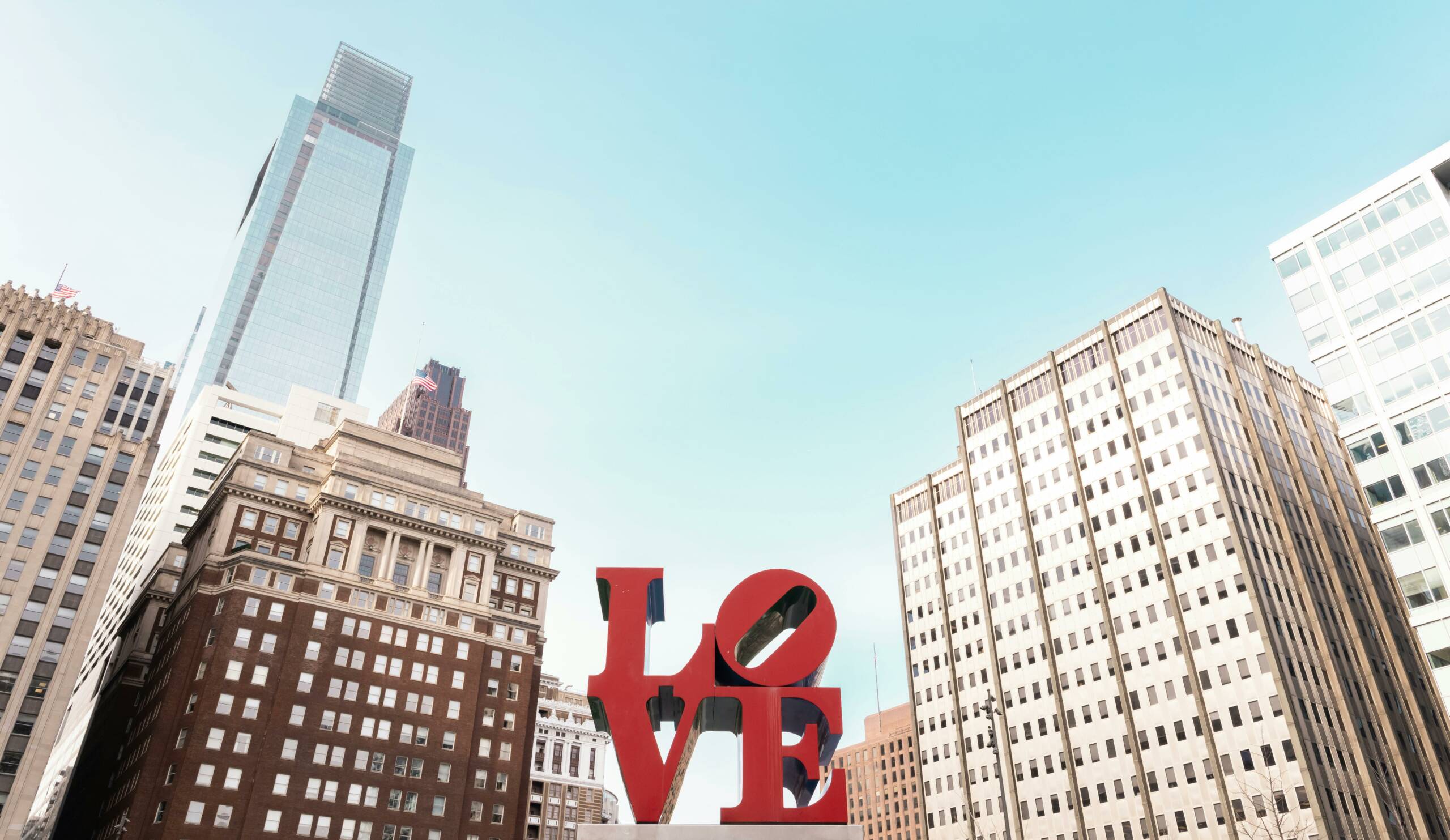
“LOVE” is an iconic sculpture created by American artist Robert Indiana. Initially designed as a holiday card for MoMA’s Christmas card competition in 1964, it was later transformed into a full-scale public art piece. Its installation first appeared in New York City in 1970 and has since been displayed in various global cities, including Indianapolis, Tokyo, and Barcelona.
This bold, colorful artwork is constructed from steel and painted in vibrant red, blue, and green, standing at over 12 feet tall. The work is recognized for its clean, geometric typography, a simple yet powerful design that communicates love in its most universal form. It was funded through a public-private collaboration, with the City of New York supporting its initial installation.
As a part of the Pop Art movement, “LOVE” bridges the gap between art and popular culture. It connects directly to public spaces, inviting interaction from passersby who are drawn to its visual simplicity.
Its presence has had lasting effects on urban spaces, influencing the cultural identity of cities and encouraging public engagement with art. Over time, “LOVE” has become synonymous with community spaces, reflecting a broader cultural shift towards art as a connector in urban environments.
8. The Little Mermaid by Edvard Eriksen (Copenhagen, Denmark)
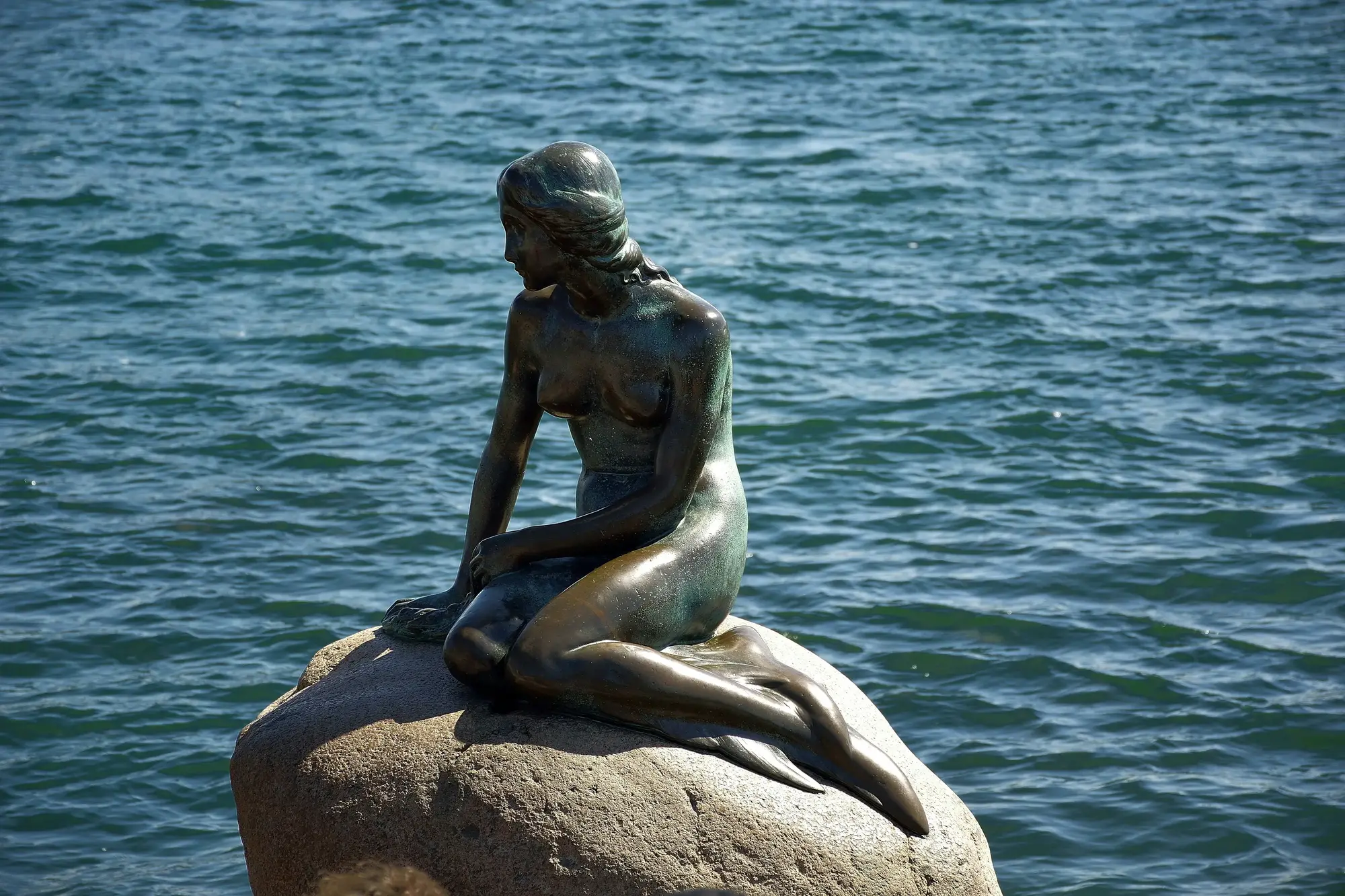
The Little Mermaid is a bronze sculpture created by Danish artist Edvard Eriksen. It stands on a rock by the waterside in Copenhagen’s Langelinie promenade, Denmark. Installed in 1913, the work depicts the iconic character from Hans Christian Andersen’s fairy tale, symbolizing Denmark’s rich cultural history.
Made of bronze, the sculpture stands approximately 1.25 meters tall and weighs 175 kilograms. Commissioned by Carl Jacobsen, the founder of Carlsberg Brewery, it was funded privately. Although originally intended as a permanent installation, it has been temporarily relocated a few times due to security concerns or special exhibitions.
The piece is often considered a symbol of both Denmark’s cultural heritage and its urban identity, as it integrates nature and mythology into Copenhagen’s cityscape. The sculpture also ties into the broader art movement of Romanticism, connecting the urban space to national culture and folklore.
Over time, The Little Mermaid has become a significant tourist attraction, transforming the waterfront into a global landmark and shaping how the city is perceived, both locally and internationally.
9. JR’s “Inside Out” Project (Global)
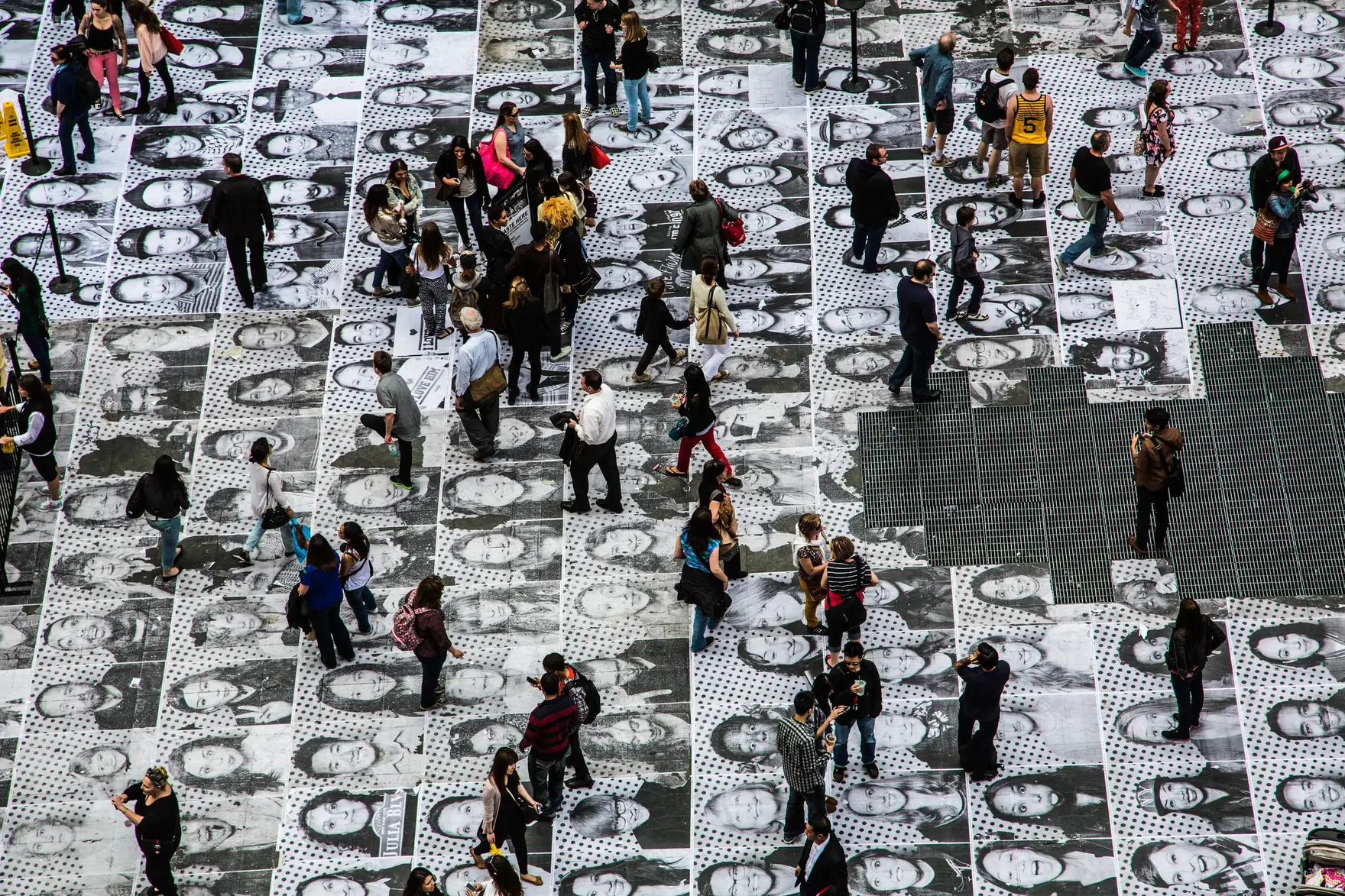
Inside Out is a participatory public artwork by French artist JR, launched globally in 2011. The project invites individuals to submit black-and-white photographic portraits, which are then printed in large-scale format and pasted in public spaces. This ongoing initiative spans cities across the world, from São Paulo to Karachi, shifting the role of the public from viewers to co-creators.
The material consists of weather-resistant paper, wheatpaste, and digital photography. Dimensions vary by site but often cover entire building facades or streetscapes. The project is self-funded and supported through a hybrid model combining public arts grants, nonprofit partnerships, and private contributions. Though installations are temporary, they often remain visible for months.
Inside Out operates within the participatory art movement, intersecting with themes of civic agency, visibility, and collective identity. Each public artwork reflects localized concerns, such as immigration, education, and social justice, reframing public space as a platform for shared expression rather than passive consumption.
This public artwork altered the spatial and cultural dynamics of urban settings by embedding personal narratives into architectural surfaces. In doing so, it transformed anonymous walls into temporary monuments of community presence, reshaping how public space functions as a site of voice and visibility.
10. Superkilen Park by BIG + Superflex + Topotek1 (Copenhagen, Denmark)
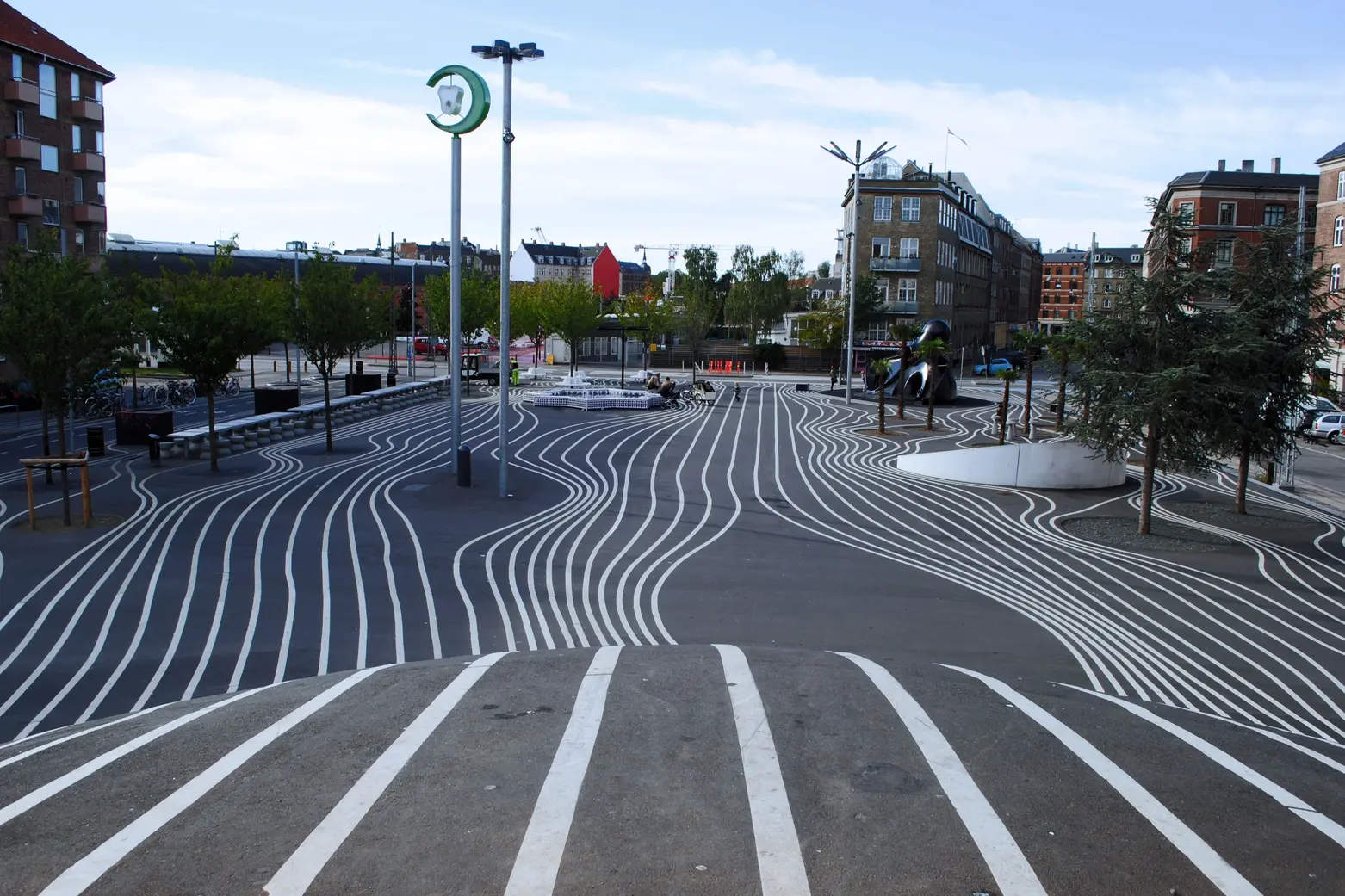
Superkilen Park is a permanent urban installation designed by architecture firm BIG, art collective Superflex, and landscape architects Topotek1, completed in 2012 in Copenhagen, Denmark.
Conceived as a participatory public art work, the park integrates over 100 objects and artifacts from more than 50 countries, benches from Brazil, a fountain from Morocco, and signage from Russia, reflecting the diverse backgrounds of the surrounding Nørrebro neighborhood.
Spanning approximately 750 meters in length, Superkilen is constructed from concrete, asphalt, steel, rubber, and painted surfaces. The project was commissioned by the City of Copenhagen and Realdania Foundation as part of an urban renewal initiative. It was funded through a hybrid public-private partnership, with a core focus on community input and identity.
Superkilen Park exemplifies site-specific and socially engaged public art, directly connecting with global migration, everyday rituals, and shared civic space. The design encourages daily interaction, play, and gathering, redefining public art as a living, user-shaped environment.
Its presence reshaped how Nørrebro was perceived, shifting the space from contested to celebrated. Superkilen Park has become a reference point in international discourse on inclusive urban design and cultural visibility through public art.
What Makes These Artworks Stand Out?
Each public artwork featured here reshapes its environment not only through form and scale, but through meaning, placement, and public interaction. Together, they demonstrate how public art work becomes a catalyst for spatial and cultural transformation.
One shared theme is the dialogue between permanence and temporality. Works like Spiral Jetty endure through time and nature, while others, such as The Gates, exist briefly, yet imprint lasting memories through their ephemeral presence.
Cultural identity and symbolism also surface across multiple public artworks. Angel of the North and the East Side Gallery have become civic icons, anchoring collective memory and socio-political reflection directly into shared space.
Some public art works activate participation, transforming spectators into collaborators. JR’s Inside Out invites people worldwide to contribute their own images, transforming the act of viewing into a collective experience.
Finally, these examples transform urban or natural settings, redefining how space is used, moved through, or perceived. In this way, each public artwork contributes to reimagining place through artistic intent.
This impact reflects a commissioning approach grounded in meaning and context, principles that guide MTArt agency when identifying and delivering public art work with long-term relevance.
Thinking of Commissioning a Public Artwork?
Public art commissioning begins with a vision for transforming a shared space into something memorable and meaningful. Public art has the power to redefine environments, spark dialogue, and create landmarks that resonate with communities and visitors alike.
The process typically starts with identifying the goals for the space, followed by engaging artists whose practice aligns with those ambitions. From concept development to installation, each phase involves collaboration between stakeholders, artists, and agencies to ensure the artwork integrates harmoniously into its setting.
MTArt guides each step, from curating artist selections to managing logistics and facilitating community involvement. This expertise brings clarity and cohesion to projects, translating creative ideas into lasting public experiences.